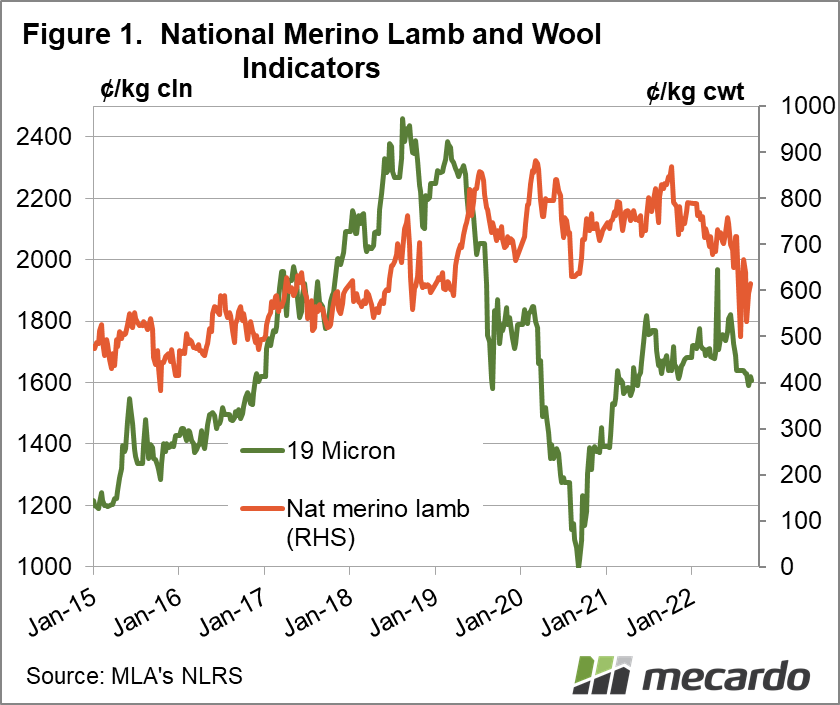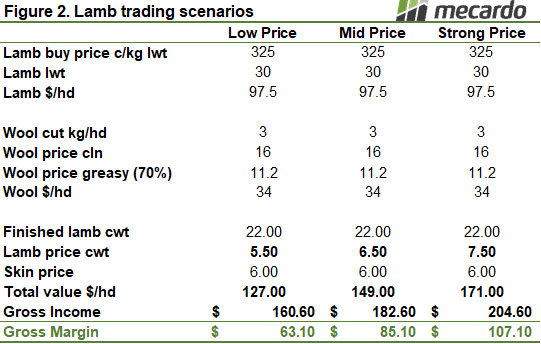It’s that time of year when store lambs start to hit the market, and it’s not long until the big runs of merino wether lambs start coming up for sale. The decline in sheep and lamb markets has had an impact on the wether lamb end of the spectrum, and they don’t look like bad buying.
Merino wether lambs, largely out of NSW, have become a pretty reliable trading opportunity for those looking for big lines of mouths with a couple of sources of income.
This time last year we assessed the prices and the trade of Merino wether lambs. The buy prices was $120/hd, and gross margins were between $75 and $100 per head, depending on when lambs were sold, weights and wool type. That’s a few variables, but the trade largely ended well.
Figure 1 shows that at a saleyard level Merino lambs are around 100¢/kg cwt below the same time last year, while 19 micron wool prices are also a little lower. Given the slaughter and wool price both dictate the income from trading merino wether lambs, we would expect bids to be a bit softer this year.
Early sales of woolly merino wethers, born in May and June has seen price hover around the $100 per head level. Some lambs were last week sold as low as $81/head, while a big line from Western NSW made $133/head.
Looking forward the 19 micron wool forward bids are a little below 1600¢/kg clean, and offers well above. Lamb prices this summer are likely to be volatile, driven by supply fluctuations. We expect price between 650 and 750¢, and we’ve used 550¢/kg cwt as the worst case.
Figure 2 shows how gross margins will look on a hypothetical merino wether trade where lambs hit 22kgs cwt, and cut 3kgs of 19 micron wool. The large range in potential sell prices means there is plenty of variation in gross margin results.
What does it mean?
The middle gross margin result is the same as last year, while the cheap buy in price means the upper end is stronger, despite the sale price being 50¢ lower. If abundant feed is available there is little chance a loss will be made on merino wether lambs, and as a trading opportunity, it looks to stack up against crossbred lambs pretty well again this year.
Have any questions or comments?
Key Points
- New season Merino wether lambs are starting to be sold online and in saleyards.
- With lower finished lamb prices, store Merino wether prices are also weaker.
- Gross margins still look good on Merino wethers, with little risk of making a loss.
Click on figure to expand
Click on figure to expand
Data sources: MLA, Auctionsplus














